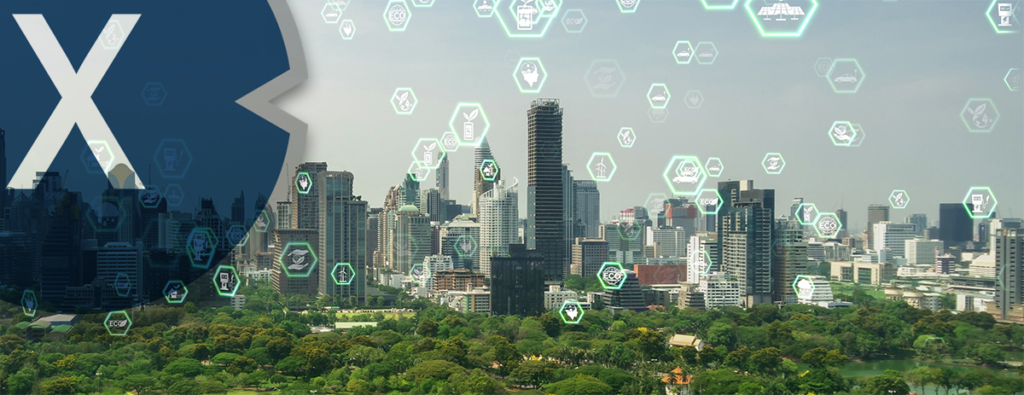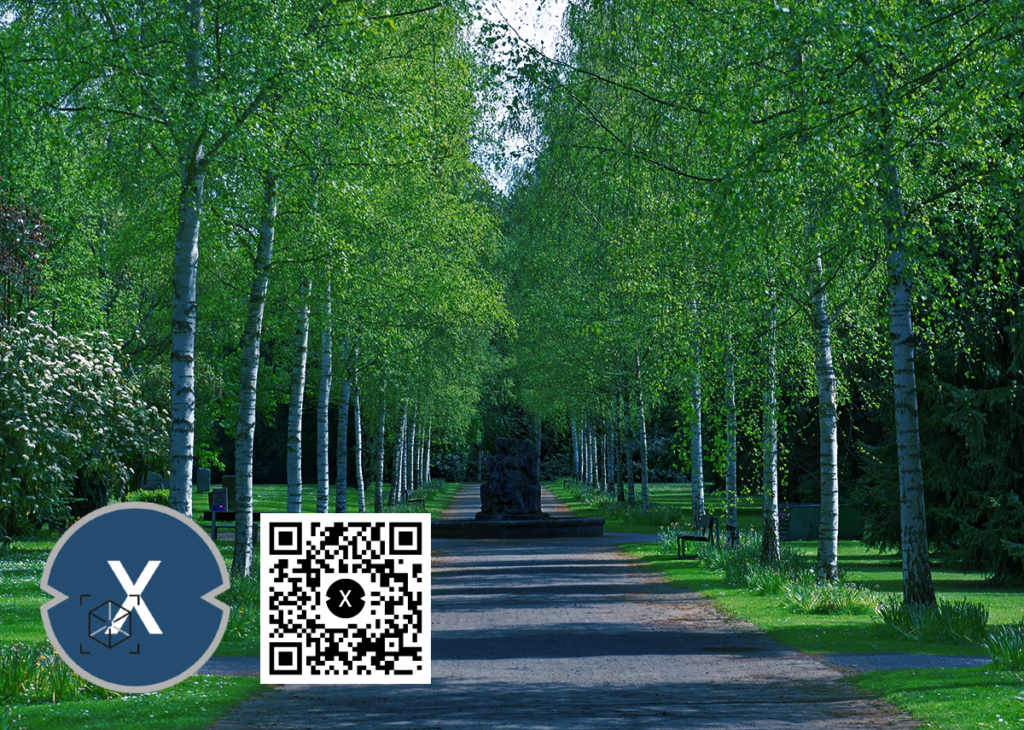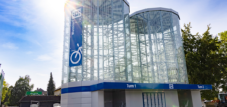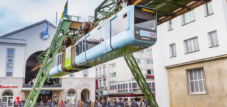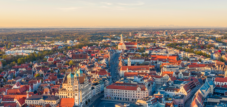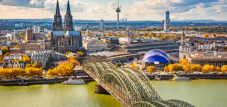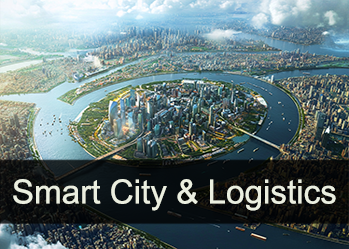Climate analysis for Stuttgart climate neutrality 2035: Climate protection for climate change with the Net-Zero Stuttgart feasibility study
Language selection 📢
Published on: August 3, 2023 / update from: August 4, 2023 - Author: Konrad Wolfenstein
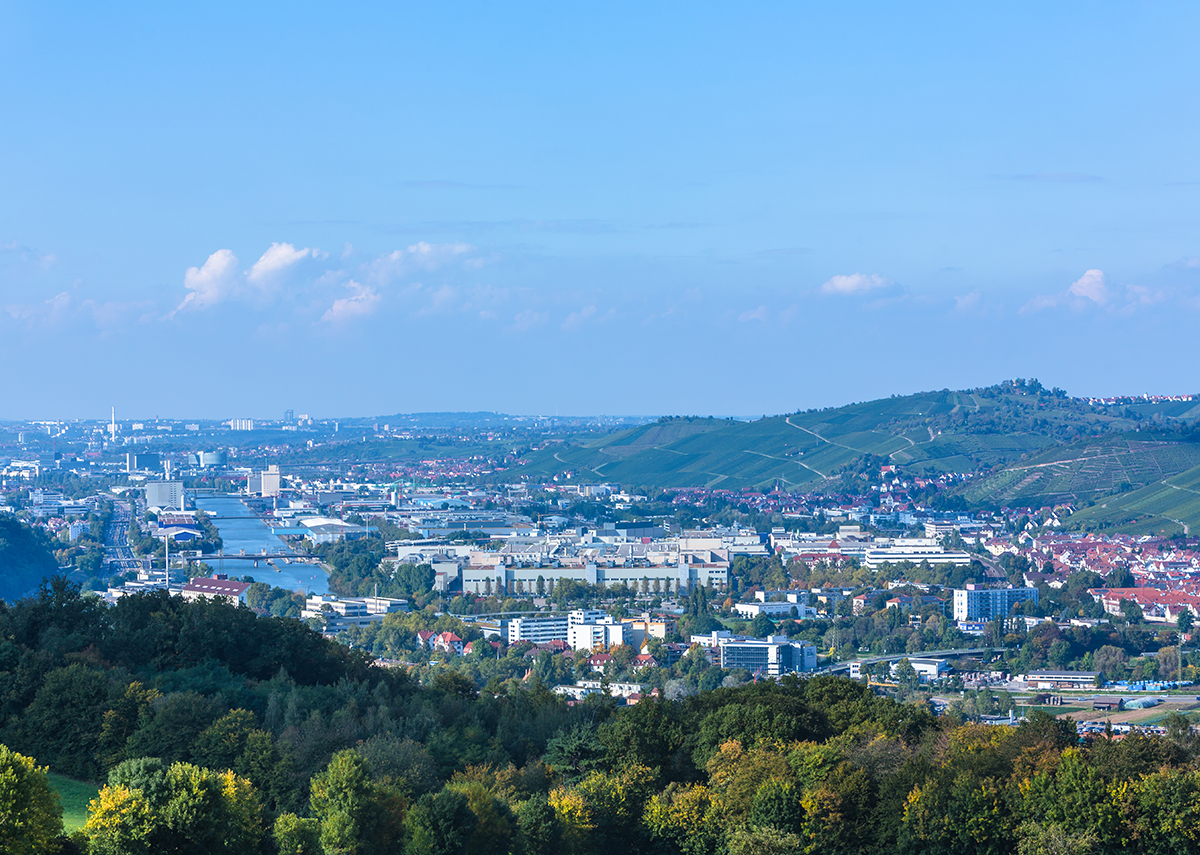
Smart City climate analysis for Stuttgart climate neutrality 2035 – Image: msgrafixx|Shutterstock.com
Stuttgart 2035: On the way to a CO2-free city metropolis
➡️ The “Smart Columbarium” – the innovative solution that is still completely unknown in Europe and more
Stuttgart, the capital of the German state of Baden-Württemberg, has set itself ambitious goals in order to become climate neutral by 2035. In view of the global climate crisis and the urgent need for action to contain climate change, the city administration has commissioned an extensive feasibility study called “Net-Zero Stuttgart”. This study is intended to show how the city can reduce its ecological footprint and take the necessary steps in order to reduce its greenhouse gas emissions to Netto zero by 2035.
Background and challenges
Stuttgart faces numerous challenges on the way to climate neutrality. As an industrial city, it has to contend with a high concentration of traffic emissions, industrial exhaust gases and intensive energy use. The surrounding hills and the basin phenomenon also lead to increased air pollution and exacerbate the effects of climate change. Nevertheless, the city is determined to do its part to combat climate change and serve as a pioneer for other cities in Germany and around the world.
The Net-Zero Stuttgart feasibility study
The feasibility study “Net-Zero Stuttgart” was carried out by a team of experts from scientists, climate researchers, engineers and urban planners. The study focused on various sectors that contribute significantly to the city's CO2 emission:
1. Transport sector
The study examined the opportunities to decarbonise the transport sector by promoting the use of electric vehicles and optimizing the public transport network. In addition, proposals were developed to promote cycling and create pedestrian zones in order to improve the quality of life of citizens.
News: The city administration has already started to intensify the use of electric buses in local public transport. The introduction of charging stations for electric cars at central locations will further advance electromobility.
2. Energy sector
The study analyzed the shift to renewable energies such as solar energy, wind power and biomass. Opportunities for increased use of solar roofs, wind farms and bioenergy systems were identified. The implementation of smart grids and energy storage systems is also part of the strategy.
News: An ambitious solar energy project has been approved that will see the installation of photovoltaic systems on the roofs of public buildings and residential buildings throughout Stuttgart. This increases local energy production and reduces CO2 emissions.
3. Building sector
One focus of the study was on the renovation and energy optimization of buildings. The city plans to promote energy renovation measures and the use of energy-efficient technologies to reduce energy consumption in residential and commercial properties.
News: Stuttgart has introduced a financially attractive incentive program for building owners who want to modernize their properties to make them more energy efficient. The response was overwhelming and many building owners have already started renovation work.
Citizen participation and public relations
Climate neutrality by 2035 requires the commitment of the entire population. That's why Stuttgart relies on comprehensive citizen participation and public relations work to increase awareness of climate protection and promote acceptance of the necessary changes.
The city administration has set up various platforms to actively involve citizens in the decision-making process. Workshops, discussion forums and online surveys enable residents to contribute their ideas and give feedback on the planned measures.
V. Cooperation with business and research institutions
Stuttgart works closely with industry and research institutions to develop innovative solutions and technologies. Start-ups in the field of renewable energy and sustainable mobility receive financial support and access to test environments in the city to advance their projects.
Close collaboration with research institutions enables the city to benefit from the latest scientific findings and to develop solutions based on well-founded studies.
Climate neutrality by 2035
The feasibility study “Net-Zero Stuttgart” has made it clear that the climate neutrality is an ambitious but realistic objective by 2035. Through the targeted implementation of measures in the areas of traffic, energy and buildings, Stuttgart can make an important contribution to climate protection and present itself as a pioneer for sustainable urban development.
The broad commitment of the citizens as well as close cooperation with the economy and research institutions are decisive success factors in order to achieve the goals set. With the “Net-Zero Stuttgart” strategy, the city sends a strong signal to other municipalities and shows that ambitious climate protection can be implemented with a clear vision and targeted measures.
Interesting solutions that we at Xpert offer cities, communities, municipalities and companies
➡️ City solar carport modules for photovoltaic parking spaces with translucent solar modules
➡️ City Pergolas, the ideal concept for the green smart city of the future
The "Smart Columbarium" as an innovative solution for space saving and urban development
A novel and exciting solution is the “Smart Columbarium”. This concept offers the possibility of saving up to 90% of the cemetery area and using the freed-up green space for other uses. This energetic and space-optimized burial site was developed by logisticians from Japan and Germany. The “Smart Columbarium” is an innovative way of burial where urns are stored in a space-saving and technologically advanced manner. This reduces the space required for traditional graves and frees up valuable green space. These areas can then be used as a valuable contribution to improving the living environment and quality of life of residents.
The combination of protecting and promoting existing green spaces, careful inner-city densification and innovative concepts such as the “Smart Columbarium” could help cities and municipalities find a balance between urban development and environmental protection. By specifically relying on green infrastructure and developing new ways of using land, the city can preserve the positive bioclimatic conditions in residential areas and at the same time improve the climate in heavily built-up regions.
Learn from the Japanese: 91% of the population already lives in urbanized areas
More about it here:
The Smart Park or Smart Columbarium concept
The Smart Columbarium concept describes the possibility of reducing the space required for cemeteries by an impressive 90%. This innovative solution creates valuable space that can be used to create green leisure and recreation parks. This measure aims to increase the culture of well-being in the community and to provide residents with an attractive environment for their leisure activities.
More about it here:
- Smart Park: New green parks thanks to Smart Columbarium
Access code / password : daifuku
Stuttgart urban climate project: Studies by the German Weather Service on the climate in the state capital Stuttgart
Climatic conditions and thermal stress in Stuttgart: A comprehensive analysis
In this comprehensive analysis, the climatic conditions and thermal stress situations in Stuttgart were examined. The aim of the study was to create a solid database for climate-conscious urban planning and to validate climate simulations through detailed measurements. The researchers used the cuboid method to simulate the frequency of heat stress in the city with a spatial resolution of 100 m. The results showed that the number of heat stress days varies depending on terrain and land use, with a higher frequency found in urban areas. The projections suggest that a significant increase in heat stress days is expected between 2031 and 2060, particularly in industrial and commercial areas. The detailed results can be read in the final report of the cooperation between Stuttgart and the German Weather Service.
Stuttgart, as one of Germany's leading cities, is facing the challenges of the changing global climate. Rising temperatures and more frequent heatwaves are impacting urban planning and residents' quality of life.
The applied cuboid method proved to be an innovative approach to enable a detailed simulation of heat stress frequency in urban areas. The spatial resolution of 100 m allowed precise insights into the distribution of thermal load to be gained. The method was based on a careful combination of measurement data, climate models and topographical information, which provided a realistic picture of the climatic conditions in Stuttgart.
The results of this study make it clear that the frequency of heat stress days depends heavily on topography and land use. Densely populated and built-up areas such as the city center were particularly affected by increased heat stress. Green spaces and parks, on the other hand, often provided relief amid the extreme temperatures.
The findings regarding future development in industrial and commercial areas are particularly alarming. A significant increase in heat stress days is expected there in the coming decades, which could have significant impacts on the health of residents and working conditions.
The study provides important information for urban planning and suggests that Stuttgart will be increasingly confronted with heat waves and heat stress in the coming decades, especially in the summer months. There is an urgent need to take appropriate measures to prepare the city's infrastructure, buildings and residents' lives for the challenges ahead.
The present study on the climatic conditions and thermal stress in Stuttgart provides a solid basis for the development of future strategies and adaptation measures. The knowledge gained is of great importance in order to ensure the well-being and quality of life of Stuttgart's citizens, even under changing climatic conditions. It is expected that the study can make a valuable contribution to addressing the challenges of climate change.
The research was carried out in close collaboration between Stuttgart and the German Weather Service and is available to the public as a final report.
More about it here:
The Stuttgart Region Association’s measures to deal with climate change
The Stuttgart Region Association is actively committed to climate protection and a sustainable future. In this article we give you an insight into the various initiatives with which we combat climate change and advocate for environmentally conscious urban planning and the preservation of green spaces. Our strategy includes expanding public transport, promoting renewable energies and working closely with various stakeholders.
The Digital Climate Atlas for climate-friendly urban planning and green spaces
An important part of our strategy is the Digital Climate Atlas, which we use for climate-friendly urban planning and the protection of green spaces. This tool allows us to take targeted action to mitigate the effects of climate change in our region. The Climate Atlas provides us with valuable data and information about past climate changes and enables us to better understand future developments. On this basis, we can designate suitable areas for green spaces and thus improve the quality of life of our citizens.
Strengthening the S-Bahn network with energy-efficient vehicles
Another significant step we are taking to reduce our CO2 emissions is strengthening the S-Bahn network with energy-efficient vehicles. By increasing the use of environmentally friendly mobility, we are helping to make the transport sector more sustainable. Modern technologies enable us to use low-emission vehicles and thus significantly reduce pollutant emissions. This not only contributes to improving air quality in our region, but also improves living conditions for the population.
Promoting renewable energies such as wind power
A central component of our climate protection strategy is the promotion of renewable energies, with wind power playing a crucial role. The expansion of wind turbines enables us to make a significant contribution to reducing greenhouse gas emissions while at the same time ensuring a sustainable energy supply. Using this clean energy source helps us reduce our dependence on fossil fuels and take an important step towards climate neutrality.
The “Klimabb” project in Böblingen - climate adaptation through cooperation
The “Klimabb” project is a remarkable example of our cooperation with various actors to cope with climate change. In Böblingen we are increasingly dealing with the topic of climate adaptation and developing measures to cope with the effects of climate change. The close dialogue with the population, local companies and other institutions enables us to develop innovative solutions. Cooperation at various levels enables us to develop effective strategies and make our region fit for the challenges of climate change.
Transatlantic dialogues and the potential of environmental technologies
In order to benefit internationally from the experiences of others and to expand our knowledge, we are actively involved in transatlantic dialogues. We recognize the enormous economic potential of environmental technologies, especially in the area of electromobility. By exchanging experiences and best practices, we can optimize our own approaches and provide new impetus for climate protection. These international connections enable us to address global challenges while developing locally adapted solutions.
The ISAP project – adaptation to climate change through resilient structures
Another important project that we are carrying out with the support of the Federal Ministry of Education and Research (BMBF) is the ISAP project. This is about the development and implementation of adaptable and resilient spatial structures that can withstand the effects of climate change. Through forward-looking and sustainable regional planning, we want to maintain the quality of life, security and competitiveness of our region in the long term, even in times of climate change.
The effort
Overall, the efforts of the Stuttgart region are impressive to actively tackle climate change and take innovative measures in order to make the region sustainable for the future. The use of the digital climate atlas, the strengthening of the S-Bahn network, the promotion of renewable energies, the cooperation in the “KLIMABB” project and the international exchange are just a few examples of a wide range of activities. The ISAP project also shows the commitment to resilient regional planning in order to successfully counter the challenges of climate change. It remains to be hoped that these efforts will help to make the Stuttgart region more climate -friendly and worth living.
Suitable for:
Urban Heat Island Effect: How Stuttgart's urban structure influences the climate
Stuttgart truly enjoys a sunny location. The city is treated to plenty of hours of sunshine every year, which its residents and visitors alike appreciate. Already in the time of the Romans, who once settled this region, the abundance of sunshine was recognized and wine was cultivated. This sun-drenched property has stood the test of time over the centuries and remains one of Stuttgart's most charming features today.
Mild climate and topographical features
Another remarkable feature of the Stuttgart city climate is its mildness. Thanks to the protected location in the so -called “Stuttgart Kessel” and the height differences of up to 300 meters, which surround the city by increased areas, there are generally low wind speeds in the region. These topographical conditions make local, thermal wind systems a decisive factor in the city's ventilation.
The interaction between urban climate and urban structure
The Stuttgart climate is not only influenced by the topography, but also significantly shaped by the urban structure. Factors such as building density, height, sealing and surface properties have a significant influence on the city's microclimate. In addition, the release of people generated by industries and traffic contributes to the development of the so-called “Urban Heat Island” effect.
Suitable for:
This causes the air temperature in densely built-up areas to be higher than in surrounding rural areas.
Climatic diversity in Stuttgart
The climatic conditions in Stuttgart are characterized by notable local variations. Differences of up to seven Kelvin in air temperature between the city center and the outskirts are not uncommon. But not only the temperature varies, wind speeds, directions, radiation and precipitation also show significant differences within the city.
The interaction between urban structure and atmosphere
Stuttgart's urban climate is undoubtedly impressive and diverse. From abundant sunshine to mild temperatures to local climate differences, the city offers an exciting potpourri of climatic characteristics. The interaction between urban structure and atmosphere contributes to a fascinating dynamic. The official website is a veritable treasure trove of climate data and information, giving those curious to learn the opportunity to delve even deeper into this fascinating subject.
Stuttgart on the way to climate neutrality by 2035: The climate protection program in focus
Stuttgart has ambitious goals and wants to become climate -neutral by 2035. The climate protection program, which runs by the end of 2023, is already implementing the first measures for climate protection and adapting to climate change. The program “World Climate in Need - Stuttgart”, adopted by the city administration in 2019, comprises over 50 measures and a budget of 200 million euros for increased climate protection and sustainable practices. This enables faster implementation of energy and traffic change and promotes green initiatives and responsible behavior within the city.
The foundation: the feasibility study “Net-Zero Stuttgart”
The city of Stuttgart has set itself the goal of becoming climate -neutral by 2035. In order to achieve this ambitious goal, the feasibility study “Net-Zero Stuttgart” was carried out, which was created in cooperation with McKinsey & Company and the city administration. This study forms the basis for the climate protection plan, which includes 13 specific action packages and shows the way to achieve CO2 neutrality by 2035.
Measures for climate protection and the energy transition
In order to achieve climate neutrality, different areas of urban life must be considered. These include energy consumption, mobility, building renovation, waste management and much more. The climate protection program defines over 50 concrete measures that are to be implemented in the next few years. These include, among other things, the expansion of renewable energies, the promotion of energy-efficient buildings, the improvement of local public transport and the promotion of sustainable mobility.
Citizen participation and the #nowclimate campaign
In order to actively involve citizens in climate protection, the #jetztklimachen campaign was launched. This campaign aims to bring different actors together to discuss climate protection and contribute ideas. Citizens are encouraged to actively participate in shaping a sustainable future for the city.
Climate protection as an opportunity for Stuttgart
The implementation of the climate protection program not only presents challenges, but also great opportunities for the city of Stuttgart. The expansion of renewable energies creates new jobs and strengthens the local economy. Promoting sustainable mobility improves the quality of life in the city by reducing traffic and air pollution. In addition, Stuttgart is becoming a pioneer in terms of climate protection and sustainability, which has a positive effect on the city's image.
Climate neutrality by 2035
Stuttgart has set himself ambitious goals and wants to become climate -neutral by 2035. The climate protection program, which is already in full swing, comprises over 50 concrete measures and a budget of 200 million euros. The feasibility study “Net-Zero Stuttgart” forms the foundation for the climate protection plan, which shows the way to CO2 neutrality. Due to the #Jetzklimachen campaign, citizens are actively involved in climate protection and have the opportunity to bring in their ideas.
Stuttgart has the opportunity not only to become a pioneer in climate protection, but also to create a sustainable and livable city for its residents. With combined forces and innovative solutions, we can achieve this goal and make an important contribution to global climate protection.
Recommendations from the Citizens' Climate Council for the Stuttgart City Council - June 2023
The Citizens' Climate Council approved two dozen recommendations for the Stuttgart City Council during its last meeting in June 2023. These recommendations will be discussed and voted on by the Council. The implementation or non-implementation of the proposals will be justified by the Council. The results of the Citizens' Climate Council include 26 recommendations, 15 of which are on the subject of transport and 11 on heating. Recommendations are considered accepted if at least two thirds of the voting members agree or if doubts are expressed but more people agree without a doubt than those who reject the recommendation. 24 recommendations were approved with the required majority, while only two narrowly missed. A final report explaining the background to all recommendations will be published on the Citizens' Climate Council website by the end of July 2023. The city council has promised to publicly explain which recommendations will be implemented and which will not.
Approved recommendations in the field of transport
1. Conduct a cycling feasibility study
A detailed feasibility study on cycling in Stuttgart is of great importance. It should take into account factors such as the creation of cycle paths, connecting routes and road safety. The study will provide valuable insights to promote cycling in the city.
2. Establishment of Park & Ride parking spaces
Park & Ride systems have proven themselves in other cities and can also be an effective solution for reducing traffic volume in the city center in Stuttgart. Strategically placed Park & Ride parking spaces allow residents to park their cars outside of the city center and use public transport for the rest of the journey.
3. Creation of three new superblocks by 2025
Superblocks offer a sustainable way to reduce traffic in residential areas and improve the quality of life for residents. The creation of additional superblocks should be carefully planned to achieve the best results.
4. Annual conversion of five percent of parking spaces
Converting parking spaces into green spaces, bike paths or other alternative uses can make better use of urban space and increase citizens' quality of life.
5. Introduction of paid parking throughout the city
Introducing paid parking can not only increase the city's revenue, but also reduce traffic in the city center because fewer people want to drive.
6. Study of the management of parking areas in the city
A thorough examination of parking management can help identify inefficient processes and make improvements to optimize parking management in the city.
7. Research into the electrification of freight transport
The electrification of freight transport can make an important contribution to reducing emissions and promoting sustainable logistics in the city.
8. Evaluation of delivery logistics using logistics centers
An assessment of delivery logistics using fulfillment centers can help increase supply chain efficiency and reduce environmental impact.
9. Increase bus frequency
Higher bus frequency can make public transport more attractive and encourage more people to switch to public transport.
10. Establishment of five public transport micro-hubs
The creation of public transport micro-hubs can improve mobility in different parts of the city and make public transport easier to access.
11. Introduction of citizen buses in the outskirts
The introduction of citizen buses in the outskirts can help ensure that even remote areas are well connected to public transport and improve citizens' mobility.
12. Improving the attractiveness of the train stations
The attractiveness of train stations should be increased to encourage more people to use trains as an environmentally friendly means of transport.
13. Carrying out information events on mobility
Mobility information events can raise awareness of sustainable transport options and encourage citizens to use alternative transport options.
Approved recommendations in the field of heating
14. Development of a funding program for heating
A funding program for heating renovations can create incentives so that more citizens switch to energy-efficient heating systems.
15. Carrying out simple and effective public relations on the topic of heating
Targeted public relations work can increase awareness of the efficient and environmentally friendly use of heating systems in households.
16. Optimization and strengthening of administration
An optimized and strengthened administration can make the implementation of heating renovations more efficient and reduce bureaucratic hurdles.
17. Establish coordination centers for building renovations in each district
The creation of coordination centers can help ensure that building renovations are coordinated and better carried out to increase energy efficiency.
18. Promotion of remediation measures
Promoting renovation measures can help more buildings be brought up to energy standards and reduce energy consumption.
19. Integration of sustainable energy into district heating networks
Integrating sustainable energy into district heating networks can help reduce CO2 emissions and make district heating supply more environmentally friendly.
20. Early information about district heating networks
Providing citizens with early information about district heating networks can help ensure that this technology is better understood and accepted.
21. Promoting the attractiveness of skilled trades
Promoting the attractiveness of skilled trades can help more people choose a career in renewable energy and energy efficiency.
22. Encouragement to choose careers in climate-related professions
Encouraging people to choose careers in climate-related professions can help more young people choose sustainable careers.
23. Providing proactive energy advisory services
Providing proactive energy advisory services can help citizens optimize their energy consumption and implement energy efficient measures.
24. Role model function as the city of Stuttgart
The city of Stuttgart should act as a role model for climate protection and implement innovative, sustainable measures to inspire other cities.
Recommendations with narrow approval
25. Reform fees based on vehicle size
Reforming fees based on vehicle size can create incentives to use more environmentally friendly vehicles and reduce CO2 emissions in transport.
26. Introduction of a city tax
The introduction of a city tax can help increase the city's revenue while reducing traffic in the city center.
Results and recommendations
The Stuttgart Citizens' Climate Council was supported by the Fraunhofer Information Center for Spatial and Construction Industry (IRB), which prepared an evaluation report with results and recommendations.
The Citizens' Climate Council has made significant recommendations that have the potential to improve the quality of life of Stuttgart's citizens and make a positive contribution to climate protection. The City Council's implementation of these recommendations can move the city forward toward a more sustainable and climate-friendly future. It remains to be seen how the city council will evaluate the individual proposals and which measures will actually be implemented. Transparent communication about the city council's decisions will be of great importance for the citizens of Stuttgart in order to strengthen trust in the city's climate policy.
More about it here:
Climate Analysis: A Comprehensive Look at the Climate
Introduction to climate analysis
Climate analysis is an important scientific method for studying the climate in specific regions or globally. It includes different techniques and approaches to collect and analyze data that is crucial to understanding climate.
Climate study: research and findings
A climate study involves the in-depth study of climate patterns, weather events, and climate changes over a period of time. Scientists use various data sources to identify and interpret long-term trends and short-term fluctuations.
Climate data analysis: evaluation of historical records
Climate data analysis focuses on evaluating historical climate records such as temperature data, precipitation and humidity. By using modern statistical methods, patterns and trends in the data can be identified, providing important information for assessing the current climate.
Climate investigation: research into specific phenomena
In climate studies, the focus is on researching specific climatic phenomena such as El Niño, La Niña or climate cycles. The aim is to better understand the underlying causes and effects of these phenomena and to develop possible predictive models.
Climate assessment: Assessment of climatic conditions
Climate assessment involves a comprehensive assessment of the climatic conditions in a specific area. Various factors such as temperature, precipitation, air quality and solar radiation are taken into account. The results serve as a basis for climate-related decisions and measures.
Climatic analysis: Study of climate zones and regions
Climatic analysis involves the study of climate zones and regions around the world. By identifying similar climatic features in specific areas, comparisons can be made to identify similarities and differences between different regions.
Climate observation: monitoring current climate changes
Climate observation involves the continuous monitoring of current climate changes in real time. Weather stations, satellites and other technologies are used to collect and analyze data on temperature, precipitation and other relevant parameters.
Climate data evaluation: Use of big data and technology
Modern technology and big data analysis are used to evaluate climate data. Large amounts of climate data are collected to identify patterns and trends, helping to better understand the climate and make more informed climate-related decisions.
Climate recording: data collection for forecast models
Climate sensing focuses on data collection for the development of forecast models. Climate scientists continually collect data to build models that predict future climate changes and weather events.
Climate diagnosis: analysis of the causes of climate events
Climate diagnostics deals with analyzing and researching the causes of climate events such as heat waves, droughts or heavy rain. By understanding the underlying factors, preventive measures can be taken to mitigate potential impacts.
➡️ This comprehensive presentation of the various aspects of climate analysis highlights the importance of this research discipline for understanding and dealing with the challenges of climate change. From evaluating historical data to developing forecast models, climate analysis plays a central role in the effort to better understand our climate and find sustainable solutions for the future.
Energetic urbanization: Climate analyzes and the climate emergency declarations of cities, communities and municipalities

Energetic urbanization: climate analyzes and the master plan for 100% climate protection - Image: Xpert.Digital
Energetic urbanization refers to the process of making cities and communities more energetically efficient and sustainable. In view of advancing climate change and increasing global challenges related to energy consumption, energy urbanization is of great importance. Cities are responsible for a significant share of global emissions, but they also offer enormous potential to combat climate change and accelerate the transition to a low-carbon society.
More about it here:
Xpert.Plus Smart City & City Logistics Consulting with Konrad Wolfenstein
Xpert.Plus is a project from Xpert.Digital. We have many years of experience in supporting and advising on storage solutions and in warehouse optimization , which we bundle in a large network Xpert.Plus
I would be happy to serve as your personal advisor.
You can contact me by filling out the contact form below or simply call me on +49 89 89 674 804 (Munich) .
I'm looking forward to our joint project.
Xpert.Digital – Konrad Wolfenstein
Xpert.Digital is a hub for industry with a focus on digitalization, mechanical engineering, logistics/intralogistics and photovoltaics.
With our 360° business development solution, we support well-known companies from new business to after sales.
Market intelligence, smarketing, marketing automation, content development, PR, mail campaigns, personalized social media and lead nurturing are part of our digital tools.
You can find out more at: www.xpert.digital – www.xpert.solar – www.xpert.plus



